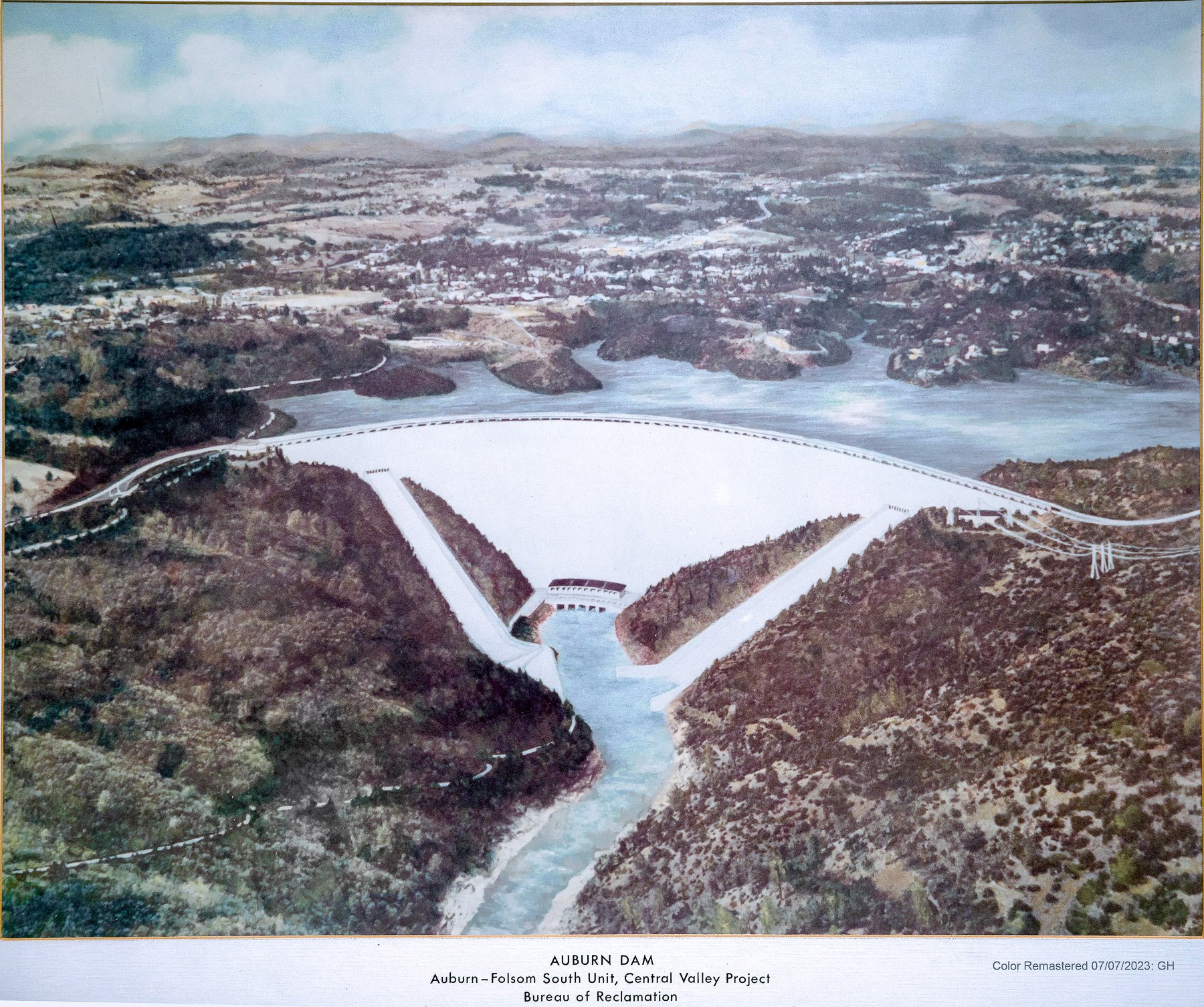The Sacramento Water Forum: A case study for reasonable water management
Artist rendering of the proposed Auburn Dam, hanging in the Auburn Courthouse. Photo of rendering credit: Gary Hughes.
They were troubled times.
Large parts of the City of Sacramento had nearly flooded. A big urban water district had recently won an ambiguous court decision to divert water from the City’s cherished American River and down the massive federal canal slated to snake down the east side of the San Joaquin Valley to Tulare County.
A divided community had just lost a fight in the U.S. House of Representatives to reauthorize and kick start the construction of the Auburn dam, which would impound a reservoir drowning fifty miles of the American River’s north and middle forks.
What choices would the community make?
The Sacramento Flood Control Agency, with starts and setbacks, moved away from Auburn dam and back to successfully reconceiving the existing floodwater management infrastructure authorized in the 1940s and the turn of the twentieth century. Friends of the River helped to shape that choice. Those choices have worked.
The community opened up a dialog with the East Bay Municipal Utility District that resulted in a peace treaty. Friends of the River had a leading part in that drama. The District moved their proposed water diversion downstream of the American River to the much larger Sacramento River.
The City and the County of Sacramento decided to form the Sacramento Water Forum to bring together diverse interests (including Friends of the River) in the watershed to come to common ground on how to protect the lower American River and secure regional water supplies. It took seven years, and many lunch and dinner meetings together, but in the year 2000 the Sacramento Water Forum Agreement was signed.
The thirty-year agreement did not rely on the Auburn dam. Perhaps just as importantly, the Water Forum had forged real ongoing working relationships among regional water districts and environmental and community interests.
With new challenges on the horizon (a warming world, for example) and with an eye to the 2030 expiration of the Agreement, the four Water Forum caucuses are now negotiating a Water Forum 2.0 Agreement. As we did three decades ago in 1993, Friends of the River has an influential and meaningful role at the Water Forum table.
It will take us a year or two of intensive work (well, the timelines might slip, but slipping is not the plan). This work is among the necessities for river protection advocates. The state is at once arid and prone to flooding. It has great rivers and at the same time massive concrete works and thirsty cities and fields that have done massive damage to the state’s aquatic environments.
These tensions will continue to demand engagement. But in at least one watershed in California adult conversations and solutions have been possible. Their continuation will be very much shaped by present-day and community leaders of the future.
Democracy should not be just a spectator sport. Let us not be just spectators.

